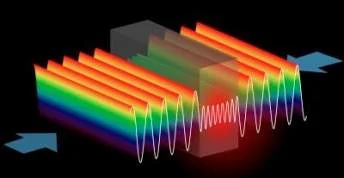Yale University scientists have built a fully functioning anti-laser, in which incoming beams of light interfere with one another in such a way as to perfectly cancel each other out. The platform is expected to pave the way for a number of novel technologies with applications in everything from optical computing to radiology.
The anti-laser – dubbed Coherent Perfect Absorber (CPA) – was created by Yale physicist A. Douglas Stone and his team, along with an experimental group headed by Hui Cao.

So, how does it work?
Well, the anti-laser operates by focusing two beams with a specific frequency into a cavity containing a silicon wafer that acts as a “loss medium.”
The wafer aligns the light waves in such a way that they become perfectly trapped, bouncing back and forth indefinitely until they are eventually absorbed and transformed into heat.
Theoretically, the CPA should be able to absorb 99.999 percent of the incoming light. However, due to experimental limitations, the team’s current CPA absorbs 99.4 percent.
“But the CPA we built is just a proof of concept,” explained Stone. ”I’m confident we will start to approach the theoretical limit as we build more sophisticated CPAs.”
The team also expects that, with some tinkering of the cavity and loss medium in future versions, the CPA will be able to absorb visible light as well as the specific infrared frequencies used in fiber optic communications.
Similarly, the team’s first CPA is about one centimeter across at the moment, but Stone said that computer simulations have shown how to build one as small as six microns (about one-twentieth the width of an average human hair).
Stone believes that CPAs could one day be used as switches, detectors and other components in next-gen optical computers which will be powered by light in addition to electrons.
Another application might be in radiology, where Stone said the principle of the CPA could be employed to target electromagnetic radiation to a small region within normally opaque human tissue, either for therapeutic or imaging purposes.






